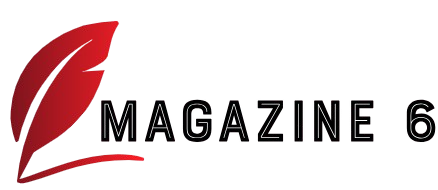Introduction to Project Management
Project management is the backbone of successful endeavors, big and small. Whether you’re coordinating a team of seasoned professionals or tackling a personal project, mastering this skill can elevate your game. But what does it really mean to be a pro at project management? #milestoneareacom/ not just about timelines and budgets; it’s about leading with confidence, fostering collaboration, and achieving results that resonate.
Imagine transforming chaos into order and turning ideas into reality. That’s the power of effective project management. With the right tools, techniques, and mindset, you can navigate any project landscape like an expert navigator charting their course through uncharted waters. Ready to unlock your potential? Let’s dive in!
The Benefits of Mastering Project Management
Mastering project management opens doors to improved efficiency. You’ll streamline processes, saving time and resources.
Effective project managers foster better communication among team members. This clarity reduces misunderstandings and keeps everyone aligned with the project’s goals.
Additionally, skilled project management enhances risk assessment. Identifying potential obstacles early allows for proactive solutions, minimizing setbacks.
Another benefit lies in increased accountability. Defined roles ensure that each team member knows their responsibilities, leading to higher productivity levels.
Mastering this discipline enables you to deliver projects on time and within budget consistently. Clients appreciate reliability, which can lead to repeat business and referrals.
Understanding the Key Elements of Project Management
Project management revolves around several key elements that drive success.
First, defining clear objectives is crucial. These goals guide the entire process and keep the team aligned.
Next, understanding stakeholder needs helps tailor the project to satisfy all parties involved. Regular communication ensures everyone stays informed and engaged.
Another essential element is resource allocation. Properly distributing tasks among team members maximizes efficiency and leverages individual strengths.
Risk management plays a vital role as well. Identifying potential roadblocks early allows teams to devise strategies for mitigation before they become major issues.
Evaluating progress through monitoring and reporting can provide insights on performance against set benchmarks. This ongoing assessment enables timely adjustments to stay on track toward completion.
Tips for Effective Project Planning and Execution
Effective project planning begins with clear objectives. Define what success looks like from the outset. This clarity will guide your decisions and actions throughout the project’s life cycle.
Next, create a detailed timeline. Break down tasks into manageable steps and assign realistic deadlines. Gantt charts can be particularly useful for visualizing progress over time.
Engagement is key during execution. Keep communication channels open among team members to facilitate collaboration and address any issues promptly.
Regularly review milestones as you move forward. This helps in assessing whether you’re on track or if adjustments are needed along the way.
Don’t overlook resource management. Ensure that each team member has access to the tools they need while maintaining flexibility to adapt to changing circumstances within the project scope.
Tools and Techniques for Successful Project Management
Successful project management requires the right tools and techniques to streamline processes. Software like Trello or Asana can help visualize tasks, allowing teams to track progress effortlessly.
Gantt charts are another powerful technique. They provide a clear timeline of project milestones and deadlines, keeping everyone aligned on objectives.
Communication plays a critical role too. Tools such as Slack or Microsoft Teams foster real-time collaboration, ensuring that team members stay informed and connected throughout the project’s lifecycle.
Agile methodologies offer flexibility in adapting to changes quickly. This approach allows teams to prioritize tasks based on feedback, improving overall efficiency.
Don’t forget about data analytics tools! Platforms like Tableau can analyze performance metrics, offering insights that guide decision-making for future projects. Embracing these resources will enhance productivity and lead your team toward successful outcomes without unnecessary hurdles.
Common Challenges in Project Management and How to Overcome Them
Project management is not without its hurdles. Many teams grapple with communication breakdowns, leading to misunderstandings and delays. Establishing clear channels of communication can alleviate these issues significantly.
Another common challenge is scope creep. As projects progress, new ideas may emerge that weren’t part of the original plan. To combat this, maintain a strict change management process and ensure all stakeholders understand the project’s goals.
Time constraints often add pressure as well. Teams may struggle to meet deadlines due to unforeseen obstacles or poor time estimation. Utilizing project timelines and setting realistic milestones can help in keeping everyone on track.
Resource allocation poses its own set of problems. Insufficient resources can hinder progress while over-allocating creates burnout among team members. Regularly assess your team’s workload and adjust assignments accordingly for optimal performance.
Conclusion: Becoming a Master in Project Management
Mastering project management is a journey that requires dedication and practice. By understanding the core principles and elements, you can navigate various projects with confidence. Embrace the tools and techniques available to streamline your planning and execution processes.
Overcoming challenges will enhance your skills significantly. Each obstacle faced offers an opportunity for growth, making you more adept at handling complexities in future projects.
As you continue this path, remember that becoming a master in project management is not just about completing tasks but also about leading teams effectively, communicating clearly, and adapting to change swiftly. The world of project management is ever-evolving; staying informed on best practices will keep you ahead of the game.
Whether you’re managing small initiatives or large-scale operations, investing time into mastering these strategies will pay off tremendously in both personal satisfaction and professional success. With commitment and perseverance, you’re well on your way to becoming a proficient project manager who can drive results efficiently while fostering collaboration within their team.
FAQs
What is “#milestoneareacom/”?
#milestoneareacom/ is a specialized platform offering tools, templates, and resources to streamline project management and development.
How can #milestoneareacom/ improve my project planning?
It provides reusable components, best practices, and collaborative tools that make planning and executing projects more efficient.
Is #milestoneareacom/ only for software developers?
No, while developers benefit greatly, project managers from various industries can also use it to enhance workflow and collaboration.
What makes #milestoneareacom/ different from other resource platforms?
Unlike general repositories, #milestoneareacom/ focuses on niche industries and specific project management needs, offering targeted solutions.
Can beginners benefit from using #milestoneareacom/?
Absolutely! It’s designed to support users at all levels, offering easy-to-use templates, documentation, and community-driven advice.






